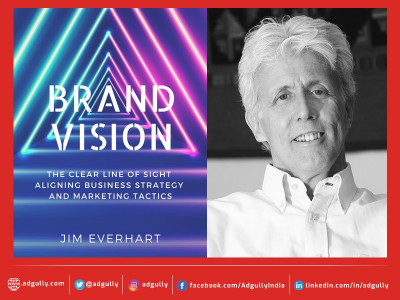“Developing a marketing program is like being an orchestra conductorâ€
Authored by Jim Everhart.
The digital revolution has produced a dizzying array of marketing communications choices. These new media can be accessed – and updated – 24x7. They are interactive. And they can include graphics, video and text. All of these things are now taken for granted.
One benefit that is often forgotten, however, is that these new media can be connected.
Email connects to web pages. Search, the same. And few people, especially in B2B, actually purchase products directly on social media, so you need to go somewhere else to buy.
But while it’s one of the most obvious features of the digital landscape, it’s also probably the most ignored.
Does that matter? You betcha. It matters big-time. Here’s why:
The separate universes, the artificial divisions between social and email and web and search, were created by marketers to harness the efforts of specialized technologists. And to handle the workload and get the job done.
Despite the fact that they are almost taken for granted in today’s communications landscape, these divisions are not inherent in the media themselves. Links happened first, enabling the development of the World Wide Web (and social media, search, email and the rest). Not the other way around.
As a result, all these media had connections built in. They were made to be connected. Linking has always been part of their DNA. Built in, if you will.
But now, the problem is that the different marketing fiefdoms have become so big and so specialized that they have drifted apart. The Twitter department doesn’t talk to PR. The email specialists don’t know what the web developers are doing. And the organic search people don’t communicate with the copywriters.
There may be good explanations for all that. Depending on the company, the various functions involved in all these marketing activities could be on different floors of the building. There could be separate reporting structures, with different people in charge. They even could be performed by a collection of best-of-breed vendors, with different addresses, or ZIP codes. They may even be in different countries, speaking different languages.
Worse yet, some have set these different media at odds, competing with each other for media dollars. That despite compelling evidence from the Advertising Research Foundation {cited by MediaPost Editor-in-Chief Joe Madese in his column on March 28 and by Bill Harvey in Media Village that “the more media you use, the greater your ROI will be”.
The good news in all this is that it’s not enough to simply slam things together with a spoonful of email here and a pinch of organic search there.
The clear opportunity for both brands and agencies is to truly integrate the different tactics. I know that’s a very 1990s term. Deliberately so.
Integration used to mean that a print ad looked and felt the same as a TV commercial or direct mail piece. And that they worked together to drive a prospect toward a common goal.
The opportunity for today’s marketers? To harness the talents of a wide range of personalities, some heavy and serious, others flighty and capricious. Following a careful script, but adding nuances and subtleties. Constantly balancing the drive to create both artistic and financial success, with reputations and large investments riding on the outcome.
In all those ways, developing a marketing program is almost like being an orchestra conductor. You have to plan carefully. You have to selecting the right instruments, build a team. And you have to coordinate the efforts of an eclectic group of people. And execute flawlessly.
Pick up your Baton!
Marketers of the future need to have all their tactics working together. With paid placements promising a video that appears on a landing page and proves the campaign’s most compelling claim. It’s then backed by an anchor piece of content – like a research study or ebook – that qualified prospect would never pass up. And will willingly, even eagerly, supply their contact information to download it. Finally, the process is supported by marketing automation programs that continue to deliver compelling messages that keep your product in front of a prospect.
You rarely hear that story these days, because there’s so much fragmentation. Specialized vendors who want to sell you their solution, whether it’s a programmatic ad purchase, an email program, an Instagram plan, or analytics.
So, it’s not surprising that people are looking for a silver bullet. The one thing that will work no matter what. Because integration of all these media and tactics, not to mention the people, is hard. Very hard.
But it’s what works. Always has. Always will.
Jim Everhart, author of ‘Brand Vision: The Clear Line Of Sight Aligning Business Strategy and Marketing Tactics’, is a freelance strategist and writer, working with corporations and agencies to develop marketing communications tactics and campaigns. He spent more than four decades in the marketing industry, most of it at Godfrey Advertising, one of the largest business-to-business marketing agencies in the United States.





Share
Facebook
YouTube
Tweet
Twitter
LinkedIn